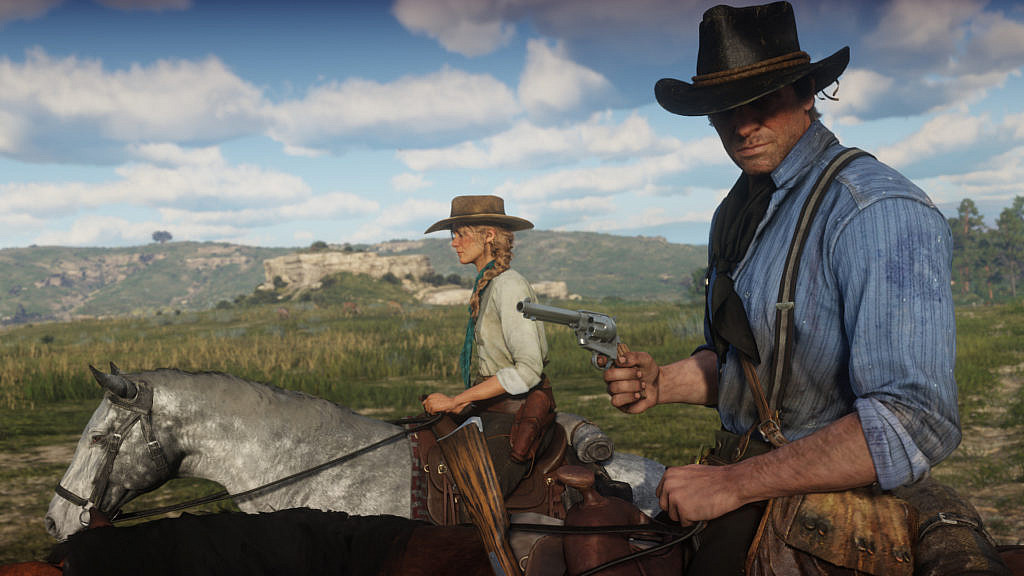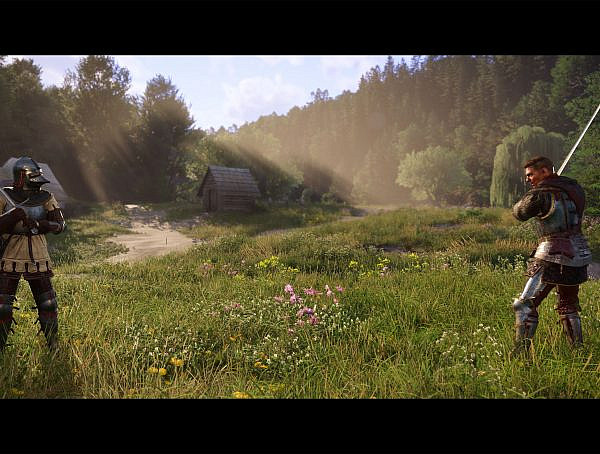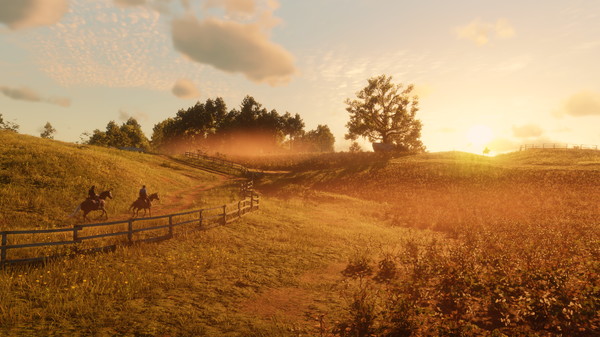Red Dead Redemption 2 (RDR2) is an action-adventure game set in the late 19th century united states. The decline of the Old West and the shift towards a more industrialized society creates the frame for the story of Arthur Morgan and his outlaw gang.
In their article “Sites of Play: Locating Gameplace in Red Dead Redemption 2”, Andrew Westerside and Jussi Holopainen analyze placeness and sitedness in Red Dead Redemption 2, applying their expertise in the fields of Performance Studies (Westerside) and game design research (Holopainen) to focus on the subject through the theoretical lens of phenomenology and site-specific performance. Site-specific performance has its origins in theatre arts: it aims to create art that exposes societal, cultural, and historical layers that penetrate our lived spaces, opposed to site-generic work where the location where bears no connection to the performance. Paraphrasing Tuan (1997), Westerside and Holopainen point out that space transforms into a place with human connections permeating through it.
Westerside and Holopainen propose a new concept of gameplace, which is described as a connection between place and experience as understood by site-specific performance (Westerside; Holopainen, 2019) and utilize the term to explore the significance of place in video game design and how it generates narratives, affects, and player identification to the game world.
RDR2 has a dynamic game world where landscape and site affect how the player will interpret and comprehend it as a cultural object. This can be illustrated by four modes of environmental storytelling by Henry Jenkins (2004). These modes are evocative spaces, enacting stories, embedded narratives, and emergent narratives. RDR2 portrays some archetypical environments in southern states of the United States. They are condensed in size and caricatured to feature the most notable features of each site (evocative spaces), and this way, their essence primes the player to expect certain actions and events typical in the Western genre (enacting stories). Spatial storytelling is a typical storytelling medium for games. As the player moves in the gameplace, they experience random encounters or side-quest prompts that are always related to the world immediately around them, or events happening somewhere else in the game world, thus making them embedded narratives. In turn, emergent narratives are player-lead, made possible by the freedom to roam and dynamic nature. The article suggests going hunting or pillaging randomly encountered farms as an example of emergent narratives. Sense of place is created, and the narrative is enhanced by utilizing all four of these environmental storytelling methods in RDR2.
Site can act as a storyteller and a structure. Westerside and Holopainen write how the main story starts with the protagonist Arthur Morgan’s gang making their way through a blizzard towards a Valentine, an archetypical “frontier town” that pulls inspiration from popular culture and old Western movies. Later in the game, the story takes Arthur to a more modern steel and steam town of Saint Denis. The emotional dissonance and affective distance are profound and a result of an iterative relationship. Moving from one end of the map to another might take only ten minutes direct. However, to the player slowly trudging the snowstorm in the wilderness, even the idea of the safety of the town of Valentine, let alone the existence of Saint Denis, is inconceivable thought. This is due to the lack of formed images in our cultural archive of the Old West transforming into New America. “Thus, the journey across RDR2’s terrain is an epochal one, a cultural one, a technological and industrial one, each of those sites its own palimpsest of American history” (Westerside; Holopainen, 2019).
According to the paper, the overarching tension in RDR2’s story is the idea of home. In the game, Arthur laments how he feels “man out of time” in an everchanging world that has left him behind, a sentiment that grows stronger when the player makes their way to Saint Denis from the wilderness of the Rockies. Arthur and his traveling gang are nomads, their home camp moving on the map throughout the game, symbolic of the ‘agrarian frontier life’ that is slowly giving way to the more static way of life, with fixed paths and directed movements.
Rockstar’s sandbox games encourage free roaming. As the player is in control of Arthur almost continuously, save for some cutscenes, they are bound to form a strong connection to the character. This identification is alternated between identifying as Arthur and with Arthur, as Arthur’s fictional agency is enacted instead of the player’s agency during story progression. Westerside and Holopainen conclude the article by summing up that a world of RDR2, that seems to exist in spite of the player, full of meaningful goal-oriented action of NPCs is not just a platform to roam from one place to another, “but a world for being in,” creating a difference between a game world and gameplace.
Westerinen, A., Holopainen, J. (2019) Sites of Play: Locating Gameplace in Red Dead Redemption 2 DiGRA ’19 – Proceedings of the 2019 DiGRA International Conference: Game, Play and the Emerging Ludo-Mix. Retrieved from http://www.digra.org/wp-content/uploads/digital-library/DiGRA_2019_paper_360.pdf
photos: Rockstar games, RDR2 Press Kit
You might also like
More from Game Research Highlights
How do you want to do this? – A look into the therapeutic uses of role-playing games
Can playing RPGs contribute positively to your wellbeing? A recent study aims to find out how RPGs are being used …
Eldritch horrors and tentacles – Defining what “Lovecraftian” is in games
H.P. Lovecrafts legacy lives today in the shared world of Cthulhu Mythos and its iconic monsters. Prema Arasu defines the …
Are Souls Games the Contemporary Myths?
Dom Ford’s Approaching FromSoftware’s Souls Games as Myth reveals the Souls series as a modern mythology where gods fall, desires …

















